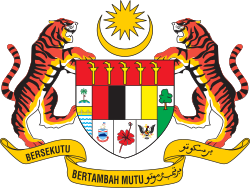| Jabatan Perangkaan Malaysia جابتن ڤراڠكأن مليسيا | |
 Coat of arms of Malaysia | |
| Agency overview | |
|---|---|
| Formed | 1949 |
| Preceding agency |
|
| Jurisdiction | Government of Malaysia |
| Headquarters | Block C6, Complex C, Federal Government Administrative Centre, 62514 Putrajaya, Malaysia. |
| Employees | 3,190 (2020) |
| Annual budget | MYR 193,488,000 |
| Agency executive |
|
| Parent ministry | Prime Minister's Department |
| Key document | |
| Website | dosm |
The Department of Statistics Malaysia (DOSM; Malay: Jabatan Perangkaan Malaysia) is a government agency in Malaysia that operates under the Ministry of Economy. It is responsible for the collection and interpretation of reliable statistics related to the economy, population, society and environment of Malaysia which the government primarily uses to assess, review and implement national public policies.
Contents
- Responsibilities and activities
- MyCensus
- Economic statistics
- History
- Establishment
- References
- External links
DOSM data are publicly accessible on the OpenDOSM website. [1]